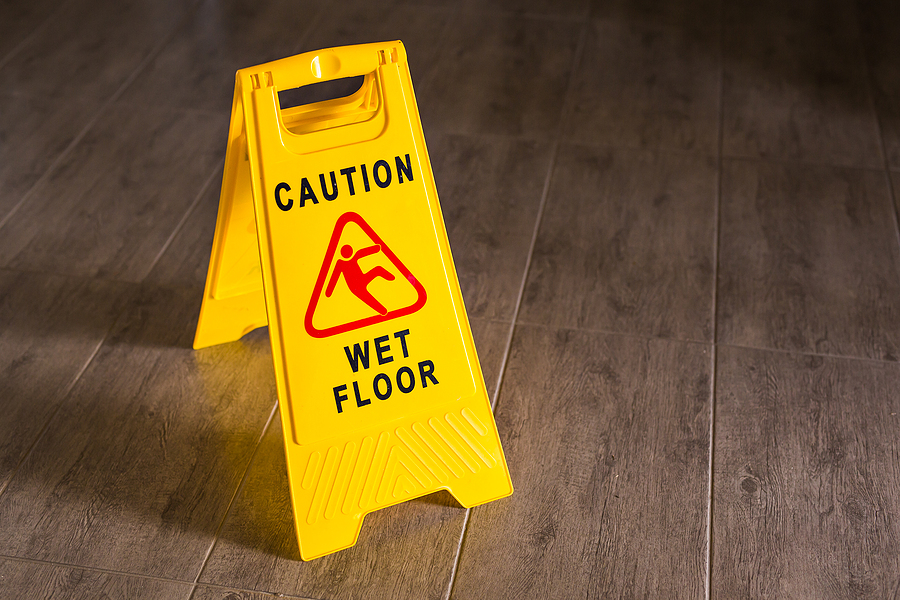How to Build a Strong Case After a Slip and Fall Accident in Palm Harbor

Slip and fall accidents can lead to serious injuries. From broken bones to traumatic brain injuries, the impact can be long-lasting. If your fall happened because of someone else’s negligence, you may be entitled to compensation. However, building a strong claim takes more than just pointing to a wet floor or uneven pavement.
Florida law places the burden of proof on the injured party. This means you need to show that the property owner failed to take reasonable steps to prevent your injury. The sooner you begin gathering evidence and protecting your rights, the better your chances of recovering damages. Below are key steps you should take after a slip and fall in Palm Harbor to help support your case.
Get Medical Attention Right Away
Even if you feel okay after the fall, getting checked out by a medical professional is one of the most important things you can do. Some injuries take hours or days to fully develop. Early treatment not only protects your health but also creates a medical record that links your injury directly to the incident.
Without prompt medical documentation, the insurance company may argue that your injuries aren’t serious or weren’t caused by the fall. Make sure to follow all medical instructions and attend follow-up appointments. Gaps in treatment can weaken your claim.
Report the Incident Immediately
Let the property owner, manager, or employee know about the fall as soon as it happens. Ask that a report be written and request a copy for your records. Whether the fall occurred at a store, apartment complex, or public space, having documentation that the incident was reported on the same day helps establish credibility.
If no formal report is made, write down the name of the person you spoke to, along with the time and location. Keep a copy of any written communication or follow-up you receive from the property owner or their insurance company.
Gather Visual Evidence
Photos and videos taken immediately after the fall can be some of the most valuable pieces of evidence. Try to capture:
-
The exact location of the fall
-
Any visible hazards (such as liquid on the floor, poor lighting, or cracked surfaces)
-
The surrounding area, including signage or lack of warning signs
-
Your clothing and shoes
-
Any visible injuries
If your injuries prevent you from taking pictures, ask a friend or bystander to help. Surveillance footage from security cameras may also be available, but it’s often deleted within days. An attorney can help request and preserve this footage before it’s lost.
Identify Witnesses
If anyone saw you fall or noticed the dangerous condition beforehand, ask for their contact information. Independent witnesses can provide statements that back up your version of events.
Even if the witness did not see the exact moment of the fall, they may have useful details—like how long the hazard had been present or whether employees walked by without fixing it. Witness testimony can add weight to your claim, especially when the property owner disputes fault.
Preserve What You Were Wearing
Keep the shoes and clothing you had on at the time of the fall. Don’t wash or alter them. These items may be used as evidence to show there was no obvious reason for you to lose your footing unless a dangerous condition existed.
For example, if you were wearing non-slip shoes and still fell on a slick floor, that supports your claim that the surface was unsafe.
Avoid Making Statements That Hurt Your Case
After the fall, avoid saying things like “I’m okay” or “It was my fault.” These statements can be taken out of context and used to reduce or deny your claim. Keep your communication with the property owner brief and factual.
When speaking to the insurance company, it’s best to consult an attorney before giving a recorded statement. Insurance adjusters are trained to find reasons to minimize payouts. An experienced lawyer can help ensure that your words are not used against you.
Document Your Recovery
Keep a journal of your recovery process. Note how the injury affects your daily life, including pain levels, missed workdays, physical therapy appointments, and activities you can no longer do. This type of documentation helps paint a full picture of how the fall disrupted your life.
Also, save all receipts related to the injury—medical bills, transportation costs, home modifications, and anything else tied to your recovery.
Understand the Time Limits
In Florida, the statute of limitations for filing a personal injury lawsuit is generally two years from the date of the injury. Missing this deadline can result in losing your right to pursue compensation. However, some cases involve different timelines, especially if the fall occurred on government property.
The sooner you speak with a personal injury attorney, the better. Prompt action allows your legal team to gather fresh evidence, speak with witnesses, and meet all required deadlines.
The Role of Comparative Fault
Florida follows a modified comparative fault rule. If you’re found partially at fault for the fall—for example, if you were looking at your phone while walking—your compensation may be reduced. If you are found to be more than 50% at fault, you may be barred from recovering anything.
This is why strong evidence is so important. You need to show that the property owner had a duty to maintain safe conditions and failed to meet that duty. Proving negligence takes time and legal knowledge.
Speak With a Local Attorney Who Knows the Area
Palm Harbor is home to a wide mix of properties—retail stores, restaurants, residential complexes, and public spaces. The rules that apply to your case can vary depending on where the fall happened and who owns the property.
An attorney with experience handling slip and fall claims in Palm Harbor understands the local legal landscape and can help you navigate your options. From gathering evidence to negotiating with insurers, having legal guidance can make a significant difference in the outcome of your claim.
Conclusion
Slip and fall accidents may seem straightforward, but proving a property owner’s negligence is not always easy. Taking the right steps early on can make your case stronger and improve your chances of receiving fair compensation.
Get medical care, gather evidence, avoid damaging statements, and talk to an attorney as soon as you can. With the right approach, you can protect your rights and begin the process of physical and financial recovery.
